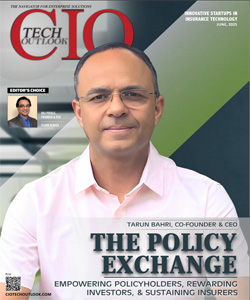CIOs Need To Know Their Business - Not Just Tech
John Sadowski, EVP & CIO, Sandy Spring Bank
 1. How would you describe the role of a CIO today in banks and other financial institutions?
1. How would you describe the role of a CIO today in banks and other financial institutions?
I describe the role of a banking CIO as being a business partner. What I mean is that today’s CIO has to be able to understand and talk the language of business. We need to know about net interest margin, cross-selling, revenue targets, and the client experience. Technology isn’t just a support function now. It enables the business and helps drive revenue.
2. How can the CIOs make their business counterparts think differently about the importance of Mobile Banking in Banks?
Implicit in the question is that our business counterparts are not thinking differently, that many of them are reluctant to adopt mobile. But the truth is that probably most of them are highly receptive to mobile. Remember that today more than 60 percent of adults use mobile phone technology. We’re doing news, weather, traffic, sports, Zillow, Waze on our phones. We’re turning on lights at home with our phones and starting the car. We’re using mobile for everything in our lives and people love it. Of course, with any new technology, there is usually some reluctance to adopt it initially. When ATM’s first came out, there was some reluctance - some people had a fear of being shortchanged, for example. But once you adapt and see how easy it is, then adoption goes through the roof. Today I see our branches almost like Apple Genius Bars. When a client comes into a branch to deposit a check, we can help them do it on their phone. So, adoption is already there. We just have to show them how to do it, and we’ll get a lot more adoption by our clients, both retail and business.
3. Which growing or future technology innovation are you personally excited about?
Near term, it’s just furthering mobile adoption. But longer range, we need to look at all the things that could be more efficient - mortgage applications, say, or managing your 401(k) or getting any kind of loan in general. Of course, some of the complexity with those types of transactions is not going to go away completely because of specific application requirements, for example. But what would be helpful is to have a one-stop-shopping app? The key will be finding the right balance between technology and human interaction. Clients still want a relationship. But they also like having a menu to choose from and to access certain things on their own. But if they want a special order, we need to stand ready to help them do that.
On a more technical side, I am excited about Blockchain technology. It has widespread user verification for the movement of money. And it offers the possibility of reducing fraud and speeding up settlement times.
4. What changes have you seen in the IT operating model of your organization during the last five years?
Probably the biggest change I’ve seen is that we are moving to a much more centralized and integrated approach. Traditionally, you have had a banking system, a consumer loan system, a mortgage system. The system worked, but there were a lot of handoffs between departments. Today, at Sandy Spring Bank, we have adopted Customer Relationship Management (CRM), and we have a central system that all of our 700 employees can tap into. It is customer specific where we can access all the information we need, to have a 360-degree view of our clients. Creating that was a collaborative effort through partnering with every division in the bank. So today we can put more CRM information at our employees’ fingertips.
Channel optimization is another key focus, which looks at how and where we deliver. We are rolling out new ways to interface with our clients and enhancing some of the more traditional ways. We find that clients use three or four ways to access our services.
Another important change is that today we are highly virtualized. Take a new server, for example. We have the ability to spin up a virtual server in an hour, where it used to take days. But I would say speed isn’t always the goal. Strategy is more important, and we should focus on how we can help the business achieve its goals. Of course, speed is still important, and we support the business through our ability to quickly respond to its needs.
5. What is your advice for the upcoming or budding CIOs?
I would say get an MBA. Another option to consider for those who are already working in banking is the Stonier Graduate School of Banking (I am a member of the school’s Advisory Board). It’s done through the Wharton School of the University of Pennsylvania. It’s a 24-month program that is very banking specific, and graduates earn a certificate. I advise students to pick a subject to focus on that is important to their bank. For undergraduates, most colleges will have programs in their business schools on management information systems. It’s important to get that mix of business and technology education. We used to see people who understood the technology but didn’t understand the business. That’s not enough anymore. Sitting around an executive table you can’t be talking bits and bytes. You have to be able to show that you understand the business and explain how to leverage technology to achieve a competitive advantage.




